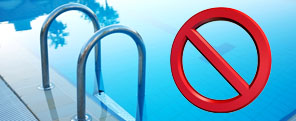|
"Why Does This Sump Smell?"
Coolant Sump Odor; What to Do
Blogs and amateur metalworkers have written about using bleach (sodium hypochlorite) as a biocide to prevent sump smell. Coolant sump odor is common in metal shops, particularly on Monday mornings, when systems have been shut-down for the weekend. Specifically, they've suggested that household bleach and chorine solutions made for swimming pools be added to water-reducible metalworking fluids to discourage microbial growth and the bad sump smell that results.
This is a very bad idea - for 5 good reasons:
- Bleach can react with metalworking fluids and generate a harmful gas.
- Bleach degrades and causes high levels of chloride salt to accumulate in the metalworking fluid.
- Bleach contains chlorides, which corrode ferrous metals and lead to instability in metalworking fluids.
- Clorox and swimming pool chlorine are not EPA registered for use as MWFs.
- These chemicals are harmful to workers. They should never be inhaled and are an open invitation to contact irritant dermatitis.
Most metalworking fluids contain a biocide package. With normal-make-up procedures, biocide level is maintained automatically. If it becomes contaminated with foreign material, or is, for some environmental reason unable to control bacterial activity, a biocide additive that is made for this purpose can be introduced so that microbial control is safely and effectively restored.
The important principle here is that a biocide is a rifle-shot against a specific target. Bleach, on the other hand, is a shotgun - and not a particularly good one at that. Expect a lot of fallout and collateral damage.
Biocides are critical to every metalworking operation. Used properly, they prevent corrosion and sump smell, maximize fluid life and reduce the downtime caused by plugged lines and filters - and worn tooling.
Fortunately, there are biocide options for every application and budget. Acculube lubricant specialists have a wealth of knowledge about every major type of metalworking fluid and machining system. Services we offer that are related to biocide protection for MWFs include chemical analysis, microbiology analysis, challenge testing and more.
Acculube fluid technicians are eager to share ideas with you on how to get biocide protection for your metalworking fluids whether you need a fast-acting formula, one that offers greatest long-term stability, compatibility with multiple fluids -or some other benefit. Most importantly, we'll provide solutions that prevent coolant sump odor, without causing issues with tooling, workpieces, fluid life - or workers.
NEXT ESSAY
 |
|
Need More Information?
The Acculube metalworking team offers a wide range of metalworking fluids and additives, as well as biocides that will keep coolant sump odor away - forever.
We can also help with information on getting the most value from these products - and from your equipment.
Contact Us: 1.800.404.2570 or email us at sales@acculube.com
|
|


